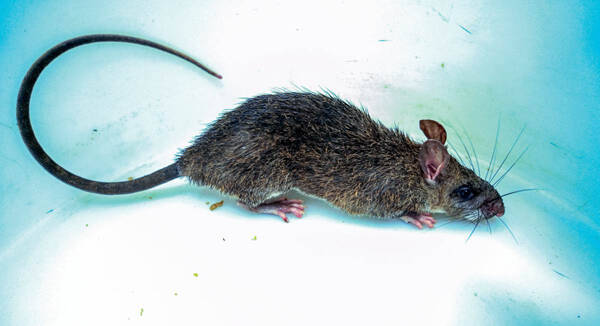Niviventer coninga
IUCN
LCBasic Information
Scientific classification
- name:Niviventer coninga
- Scientific Name:Niviventer coninga,Coxing's White-bellied Rat,Mountain Mouse
- Outline:Rodents
- Family:Rodentia Muridae Rattus
Vital signs
- length:240-320mm
- Weight:800g
- lifetime:
Feature
It has a relatively sturdy body, a long and thick tail, large and thin ears, brown or slightly light brown back hair, and pure white belly hair.
Distribution and Habitat
In China, it is distributed in Sichuan, Yunnan, southeastern Tibet, Guizhou, Gansu, Shaanxi, Hubei, Chongqing, Guangdong, Guangxi, Zhejiang and Hainan. Abroad, it is distributed in India, Myanmar, Thailand, etc.
The white-bellied giant rat mainly inhabits subtropical mountain forest areas, and is commonly seen in broad-leaved forests, mixed coniferous and broad-leaved forests, or grasslands near hillside farmlands with sparse forests. It likes to choose shrubs near ditches as its habitat.
Appearance
Individually large. Body length 240-320mm. The maximum weight can reach 800g. The hind legs are generally over 45mm long, and the tail length is 270-340mm. Another notable feature is: the abdomen is pure white, the color boundaries of the back and abdomen are obvious, and the back of the body is tan. The tail is also two colors, the back is the same color as the back of the body, the belly is white, and the hair on the tail is slightly longer.
Details
The white-bellied giant rat belongs to the Murinae subfamily and the genus Long-tailed Rat. There are 4 species in this genus worldwide, and only the white-bellied giant rat, also known as the small bubble giant rat, is found in China. It is distributed at low altitudes, generally not exceeding 1000m, and is slightly higher in Yunnan and Tibet. It is a common species in shrubs and evergreen broad-leaved forests, and is occasionally found in farmlands and residential areas. It is more common in caves in winter.

The white-bellied giant rat is active at night and starts to go out after dusk. It has a wide range of activities. It is good at climbing and often climbs up fruit trees to steal fruits. It spends the winter in caves in mountainous areas. In late spring and early summer, it often moves in the fields in mountainous areas.
The white-bellied giant rat often makes its nest in the cracks of rocks near water sources, and the hole is about 7-8 cm wide. The area around the hole is worn very smooth due to frequent passing, and there are footprints and feces left. In the weeds outside the hole, it is also common to see a runway, about 8-10 cm wide. In late spring and early summer, the range of activities is large, there is no fixed nest, and it uses bushes, weeds, thorn bushes and other places for temporary residence.
The white-bellied giant rat mainly feeds on the stems, leaves and other green parts of plants. In summer, they also eat fresh fruits and a small amount of insects. In winter, they generally feed on various wild fruits in the mountains, such as chestnuts, Masson pine, and fir fruits.
The white-bellied giant rat breeds twice a year, once in spring and once in autumn, and produces 2-4 pups per litter.
Listed in the 2008 Red List of Endangered Species of the World Conservation Union (IUCN) ver 3.1 - Least Concern (LC).

In October 2020, the State Forestry and Grassland Administration issued the "Notice on Standardizing the Scope of Classification and Management of Prohibited Wildlife" on its official website. For 45 species of wild animals such as the white-bellied giant rat, the "Notice" clearly requires that relevant breeders should be actively guided to stop breeding activities before the end of December 2020 and complete the disposal work in accordance with relevant regulations. If it is necessary to retain a moderate amount of seed sources for non-edible purposes such as scientific research, the feasibility of the work plan should be fully demonstrated and the relevant procedures should be strictly followed.








